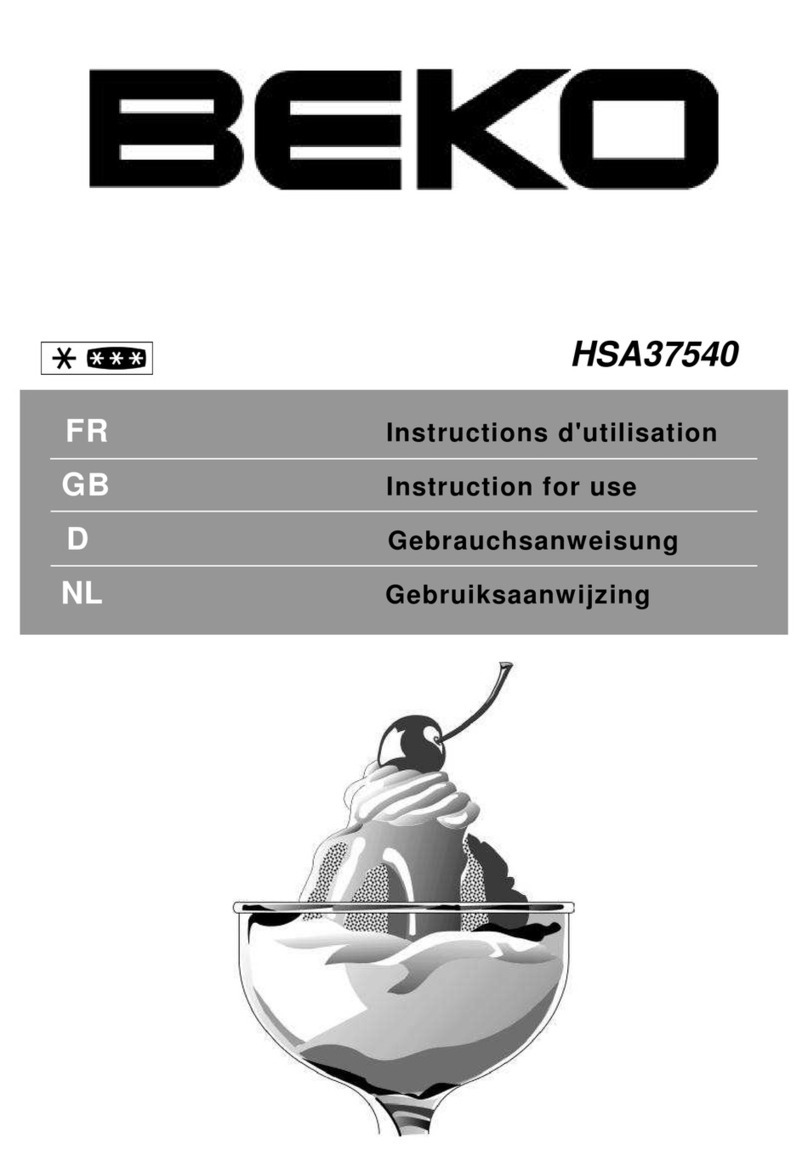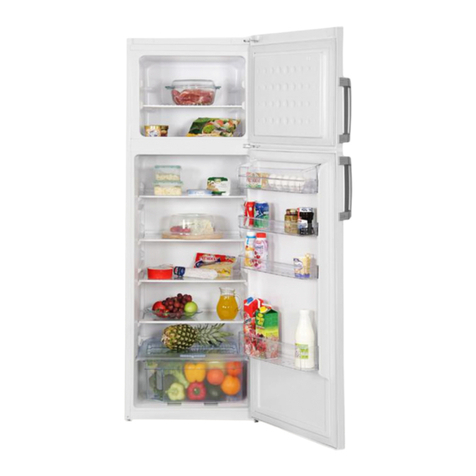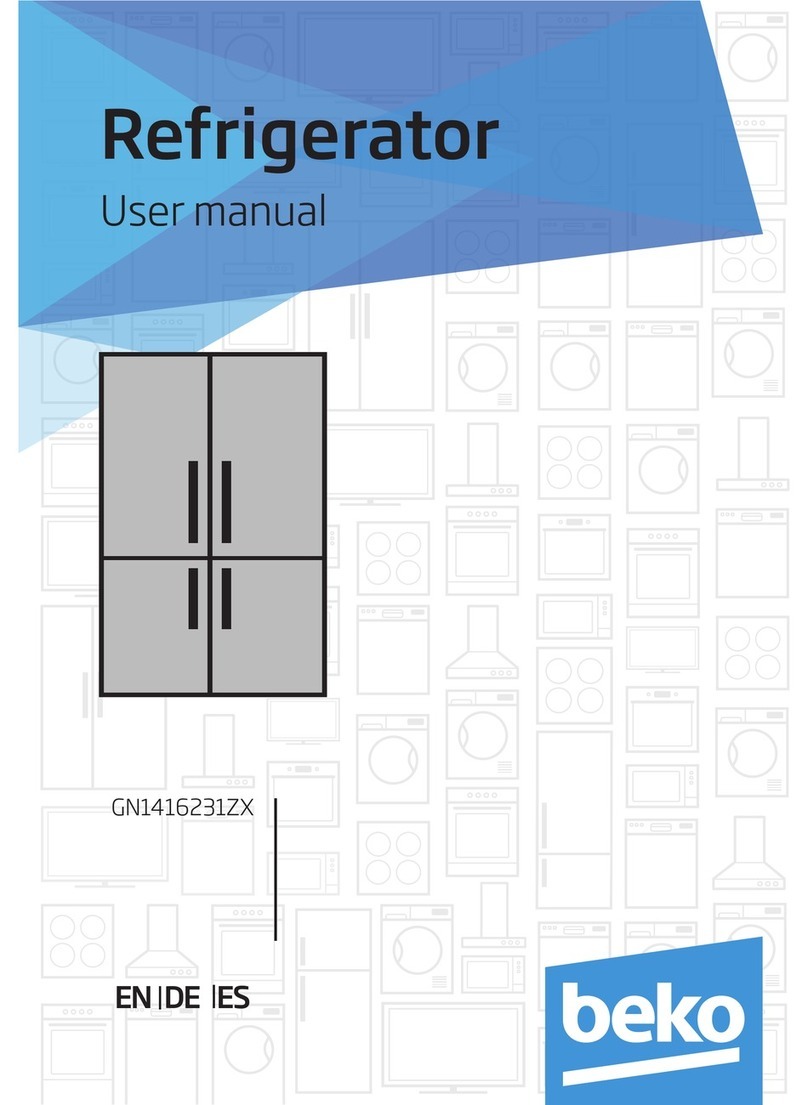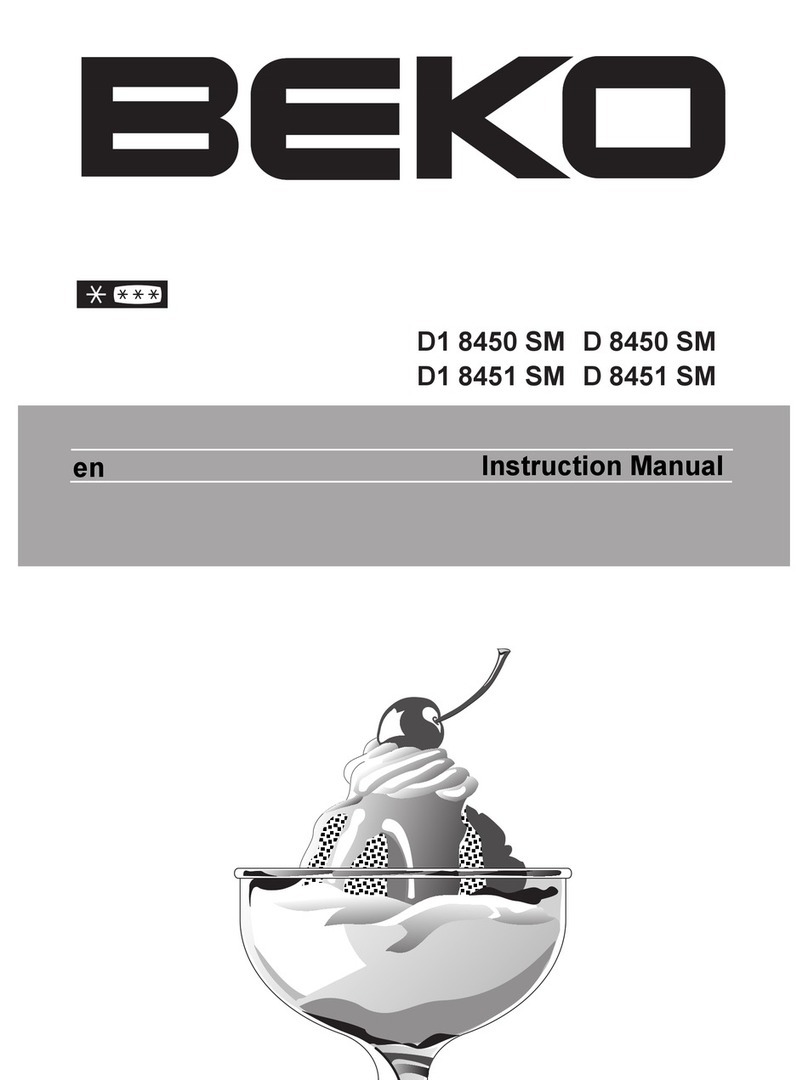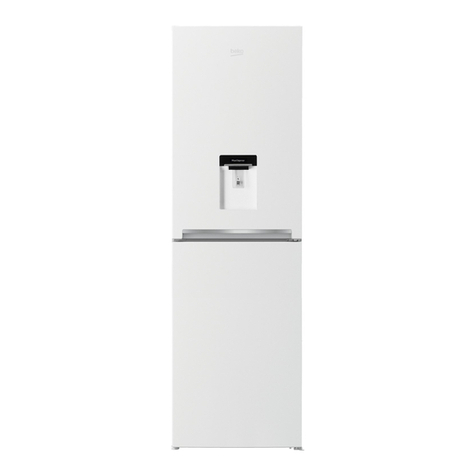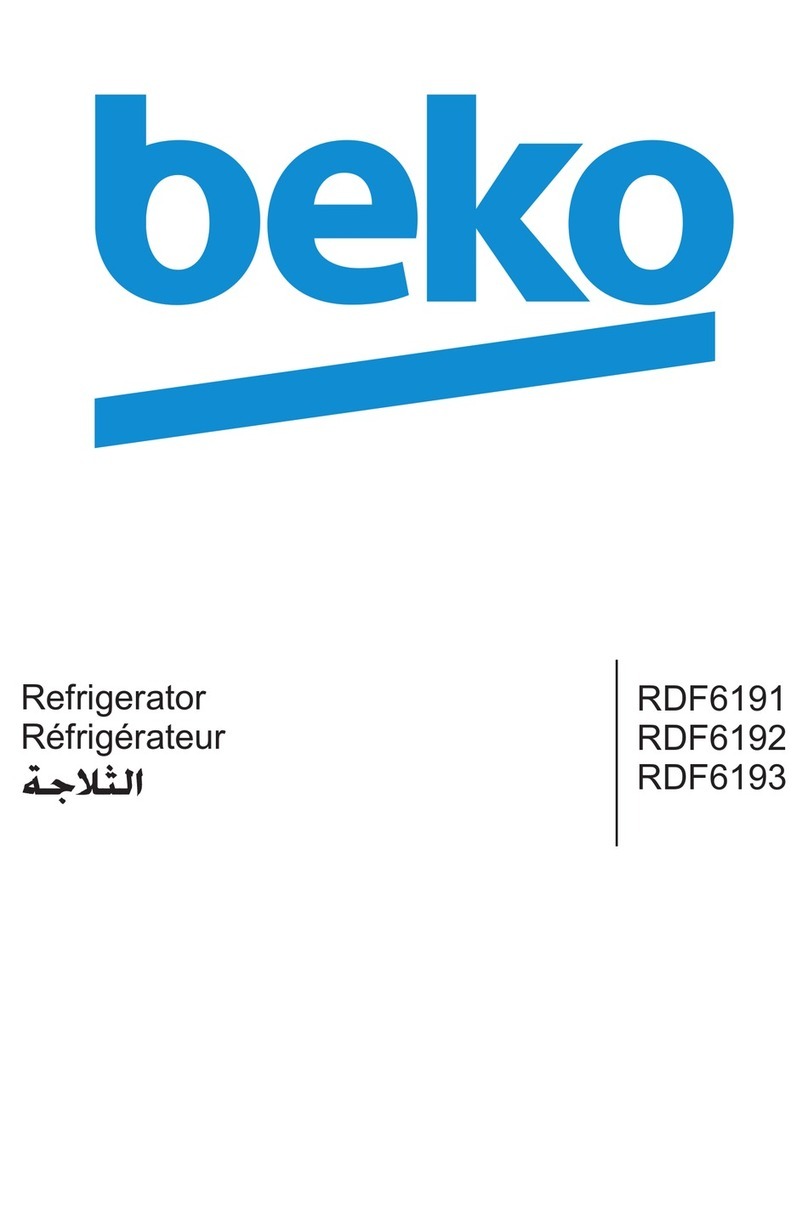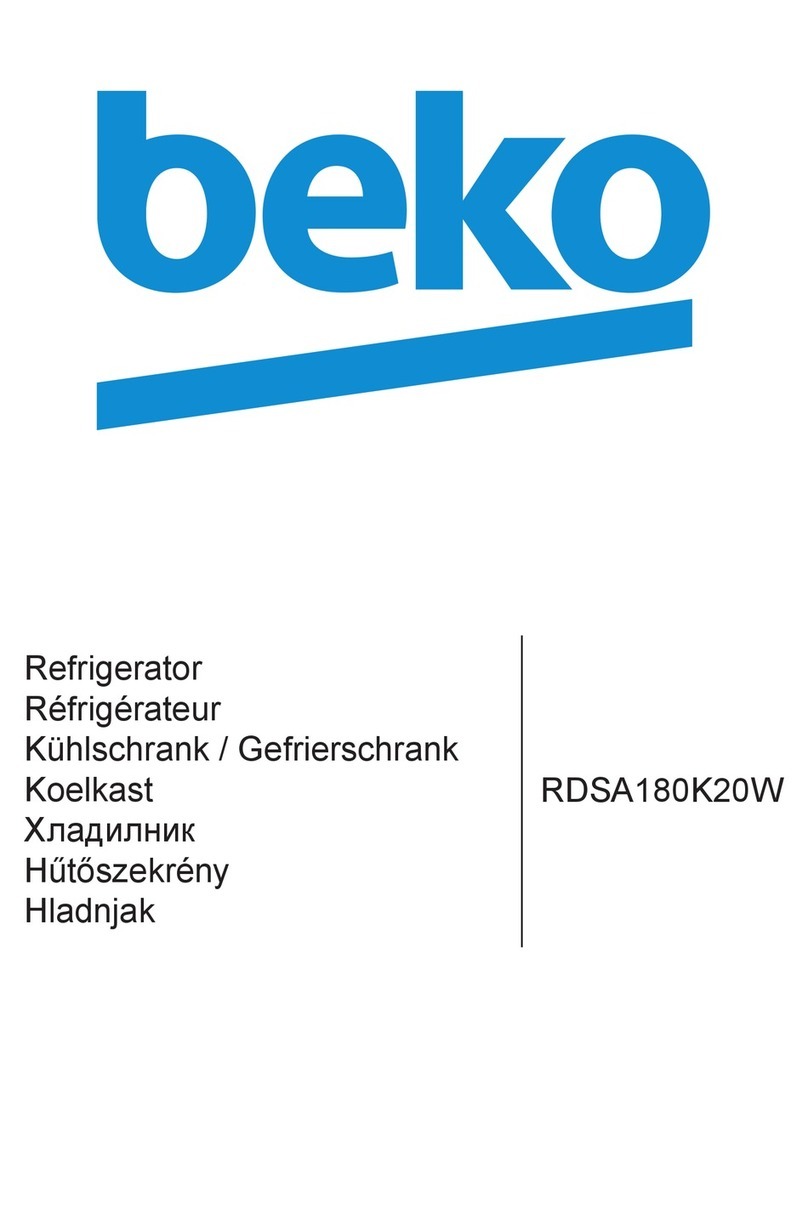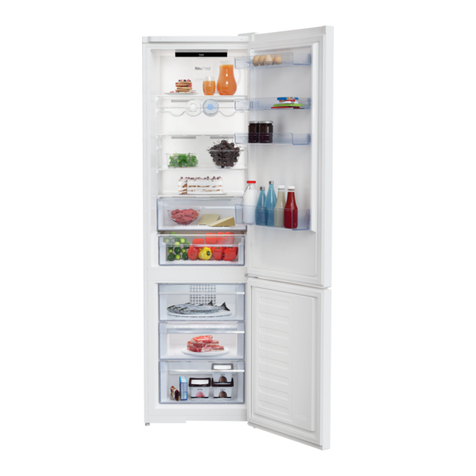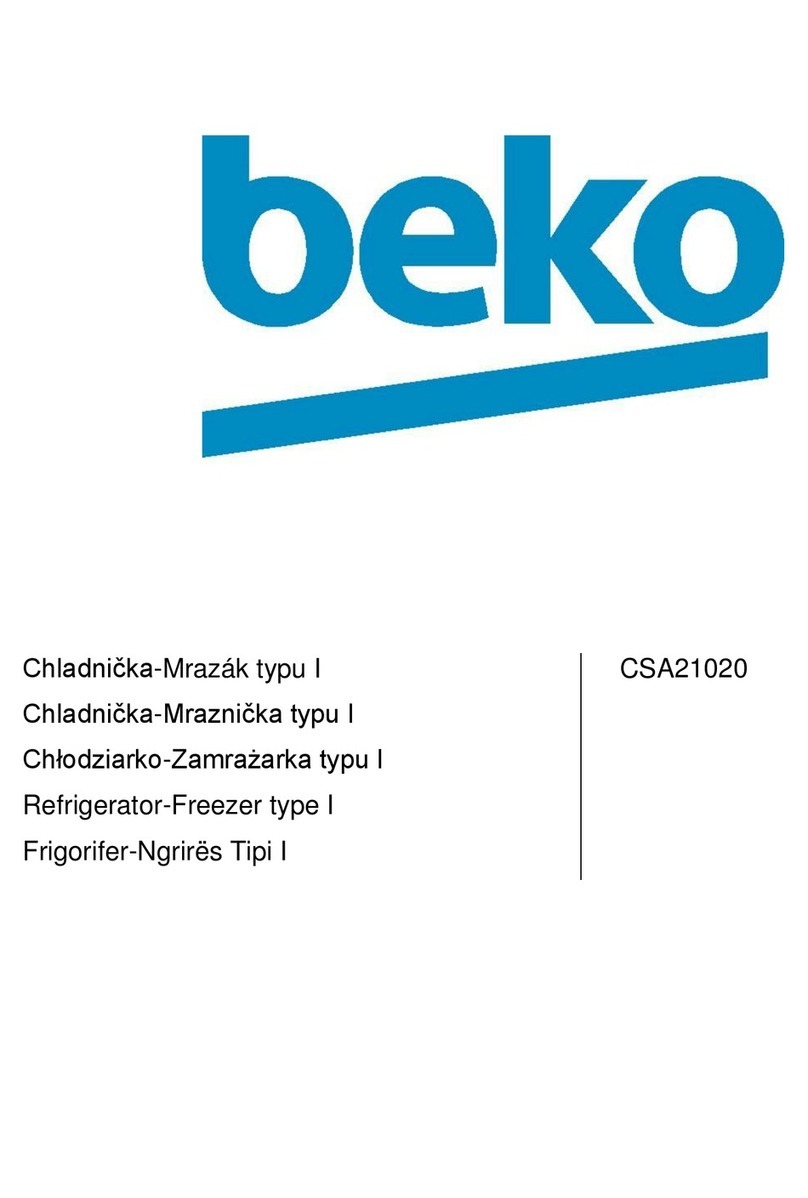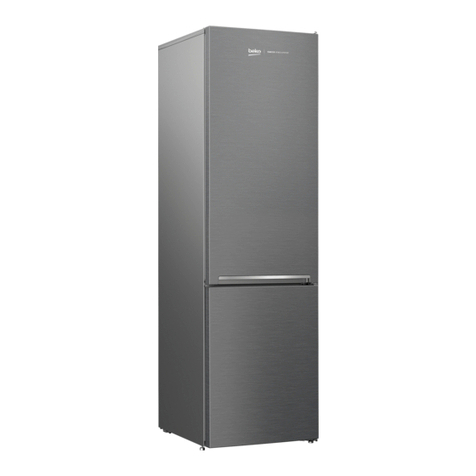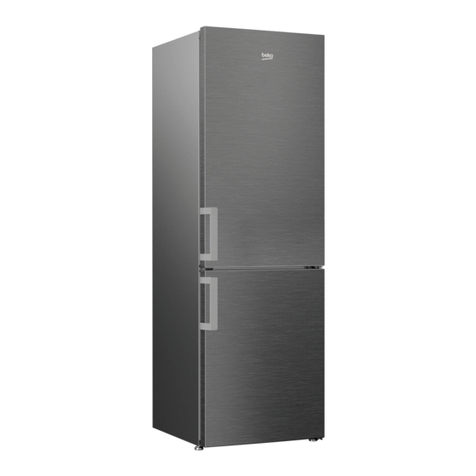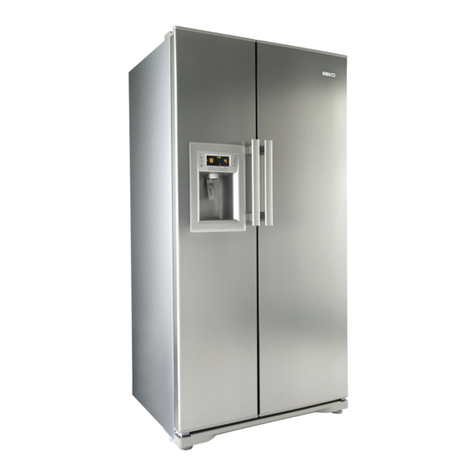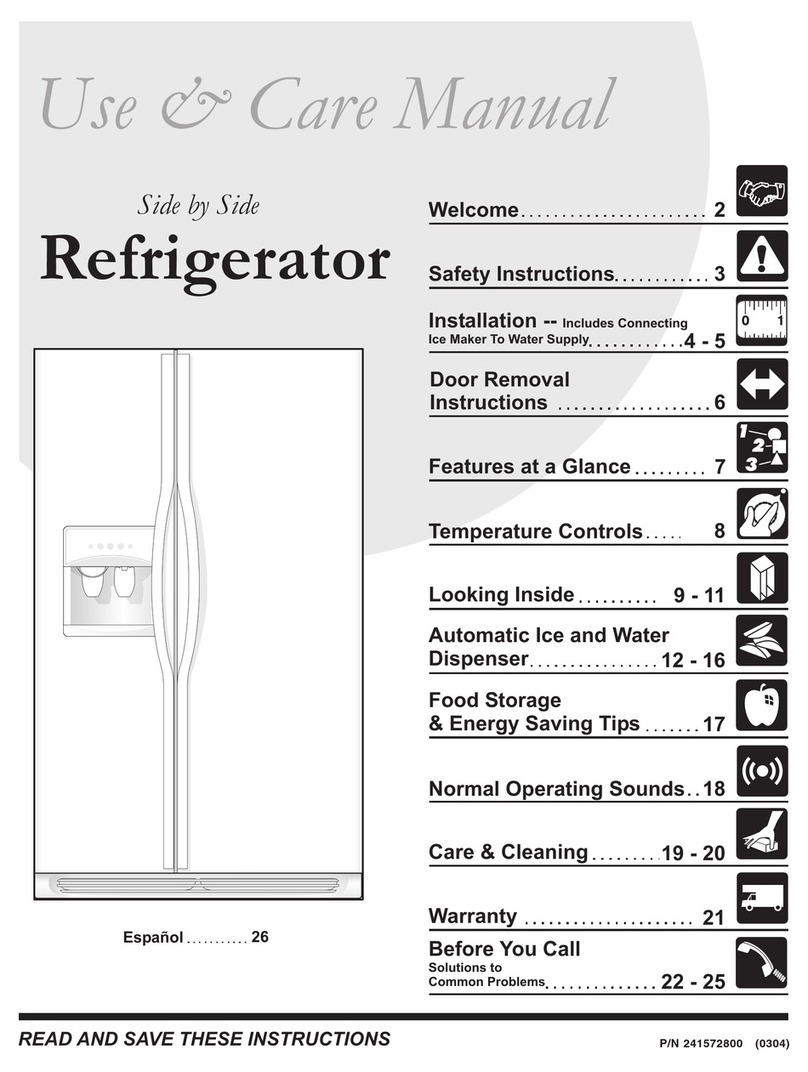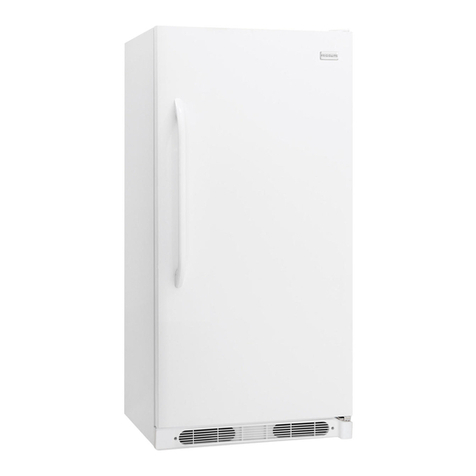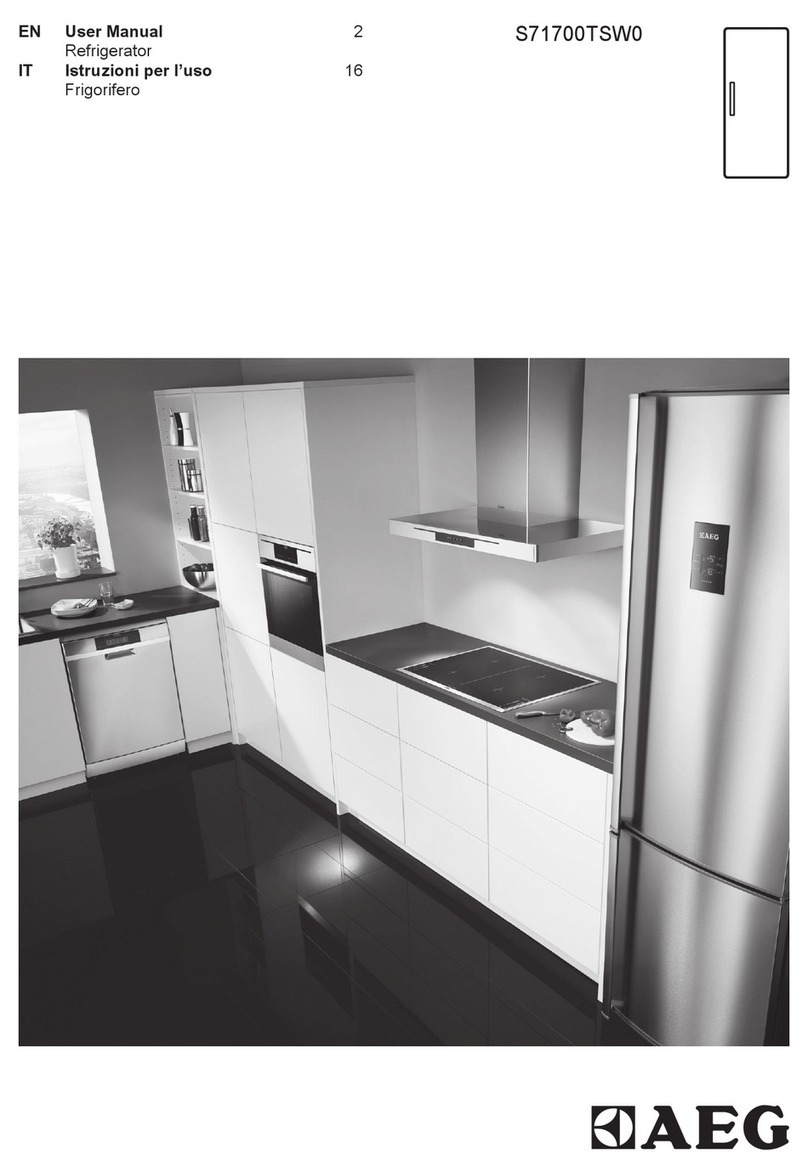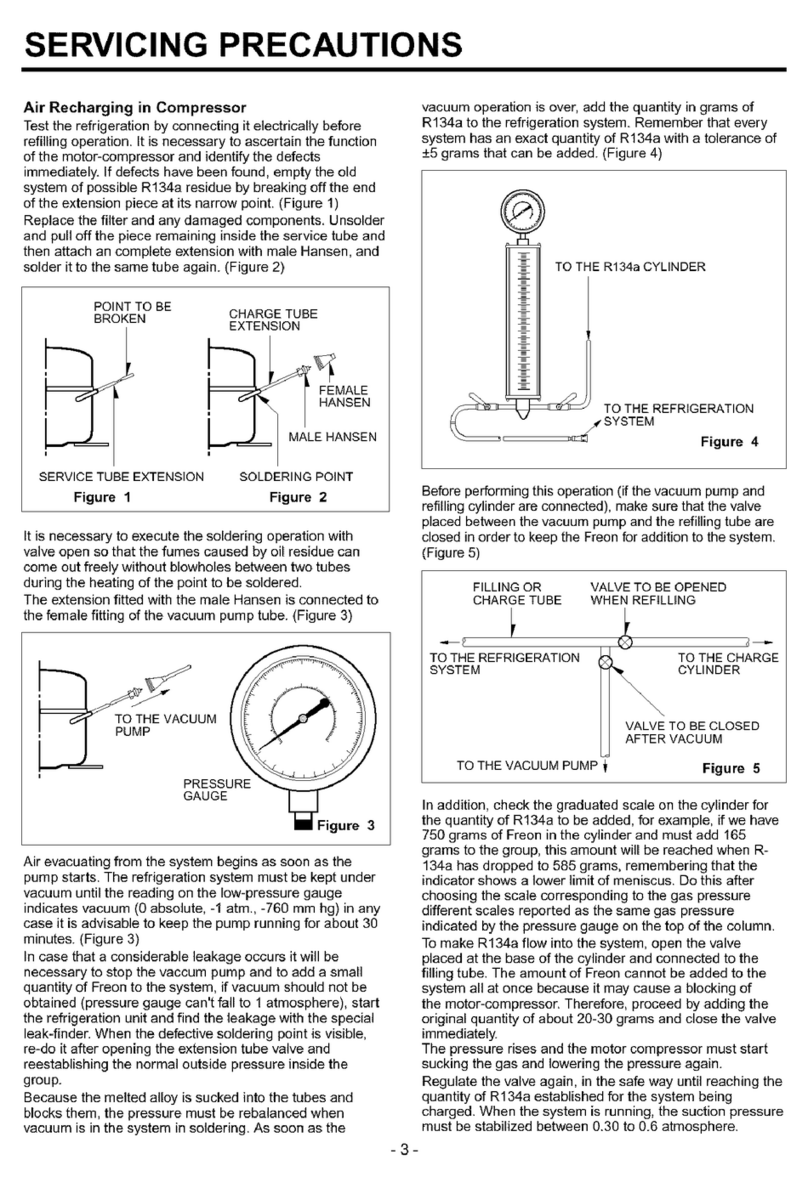4. The appliance should be positioned on a
smooth surface. The two front feet can be
adjusted as required.To ensure that your
appliance is standing upright adjust the two
front feet by turning clockwise or anti-
clockwise, until firm contact is secured with
the floor. Correct adjustment of feet prevents
excessive vibration and noise (Item 4).
5. Refer to "Cleaning and Care" section to
prepare your appliance for use.
Getting to know your appliance
(Item 1)
1 - Thermostat and lamp housing
2 - Adjustable Cabinet shelves
3 - Water collector
4 - Crisper cover
5 - Crispers
6 - Ice tray support & ice tray
7 - Compartment for quickly freezing
8 - Compartments for frozen froods keeping
9 - Adjustable foot
10 - Shelf for jars
11 - Shelf for bottles
Suggested arrangement of food in
the appliance
Guidelines for obtaining optimum storage and
hygiene:
1. The fridge compartment is for the short-term
storage of fresh food and drinks.
2. The freezer compartment is
rated and suitable for the freezing and
storage of pre-frozen food.
The recommendation for storage as
stated on the food packaging should be
observed at all times.
3. Dairy products should be stored in the
special compartment provided in the door liner.
4. Cooked dishes should be stored in airtight
containers.
5. Fresh wrapped produce can be kept on the
shelf. Fresh fruit and vegetables should be
cleaned and stored in the crispers.
6. Bottles can be kept in the door section.
7. To store raw meat, wrap in polythene bags
and place on the lowest shelf. Do not allow to
come into contact with cooked food, to avoid
contamination. For safety, only store raw meat
for two to three days.
8. For maximum efficiency, the removable
shelves should not be covered with paper or
other materials to allow free circulation of cool
air.
9. Do not keep vegetable oil on door shelves.
Keep the food packed, wrapped or covered.
Allow hot food and beverages to cool before
refrigerating. Leftover canned food should not
be stored in the can.
10. Fizzy drinks should not be frozen and
products such as flavoured water ices should
not be consumed too cold.
11. Some fruit and vegetables suffer damage if
kept at temperatures near 0°C. Therefore wrap
pineapples, melons, cucumbers, tomatoes and
similar produce in polythene bags.
12. High-proof alcohol must be stored upright in
tightly closed containers. Never store products
that contain an inflammable propellant gas (e.g.
cream dispensers, spray cans, etc.) or explosive
substances. These are an explosion hazard.
Temperature control and adjustment
Operating temperatures are controlled by the
thermostat knob (Item 5) and may be set at any
position between 1 and 5 (the coldest position).
The average temperature inside the fridge
should be around +5°C (+41°F).
Therefore adjust the thermostat to obtain the
desired temperature. Some sections of the
fridge may be cooler or warmer (such as salad
crisper and top part of the cabinet) which is
quite normal. We recommend that you check
the temperature periodically with a thermometer
to ensure that the cabinet is kept to this
temperature. Frequent door openings cause
internal temperatures to rise, so it is advisable
to close the door as soon as possible after use.
Before operating
Final Check
Before you start using the appliance check that:
1. The feet have been adjusted for perfect
levelling.
2. The interior is dry and air can circulate freely
at the rear.
3. The interior is clean as recommended under
"Cleaning and care.”
4. The plug has been inserted into the wall
socket and the electricity is switched on. When
the door is open the interior light will come on.
